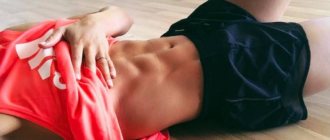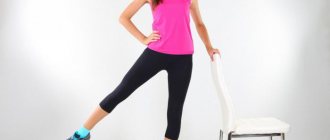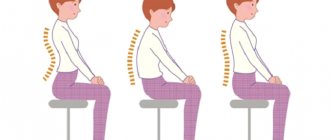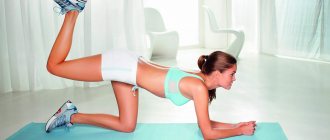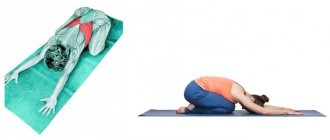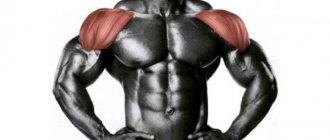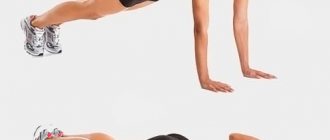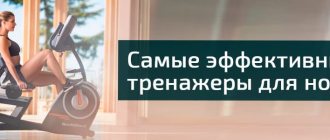Our modern lifestyle puts a lot of stress on our backs. We spend a lot of time on computers and smartphones. Also, driving a car, carrying huge bags of groceries, and many other factors that significantly overload the back muscles. That's why it's so important to train and keep her in shape.
In this article, you will discover the 13 best basic women's back exercises to recreate that elegant and impeccable posture and sculpt a strong and beautiful back. They can be performed both at home and in the gym, so you will no longer be able to avoid training.
A little about your back
There are many large muscle groups in the back. The trapezius sits at the top, forming a diamond shape between your shoulders and the middle of your spine. Your rhomboids are located in the middle of your upper back, connecting the deltoids.
The largest muscles of the back are the latissimus, which cover the outer sides of the body and form that beautiful V of muscles. The lower back muscles, known as the erector spinae muscles, run on either side of the spine. Maintaining a strong and reliable spine will solve all the problems that may arise in the lumbar region, which are typical for many women. They also help improve your balance and coordination.
Strengthening and toning all areas of your back will not only give you a tight, firm, and stable spinal column. It will also lift your breasts, promoting the blossoming of your femininity.
A little about correct posture
Correct posture is usually understood as a body position in which the head is slightly raised, the shoulders are turned, the shoulder blades are close to the spine without protruding, and the abdominal line does not extend beyond the level of the chest.
Correct posture is the key to health. And these are not just big words. It is important to take this responsibly, since curvature of the spine and disturbances in the functioning of the back muscles provoke serious disturbances in the functioning of internal organs. A child with a curved back is more susceptible to colds, bronchitis, gastritis, constipation, and problems in the development of the heart and lungs.
You need to take care of your baby's spine from a very early age. You need to simply and clearly explain to your child that if he holds his back unevenly and sits incorrectly, he may get sick. It is important to make it a rule to do light exercises with your baby for prevention - this will prevent many troubles.
Poor posture often appears at school age. Schoolchildren have to stay in the same position for a long time, their muscles are constantly tense, they get tired, and pain occurs. To relieve tension, the child needs to constantly change position, bend the spine and lean to the side.
If your child experiences symptoms such as constant fatigue, clumsiness, headache and neck pain, refuses to be active, or complains of cracking joints and pain in the limbs when moving, it is important to consult a doctor. Do not self-medicate, otherwise you will only make the situation worse. Only a specialist can determine the level of poor posture and recommend procedures that will be useful in your case.
The formation of posture is a fairly long process, starting at birth and lasting up to 25 years. Particular attention should be paid to posture during the period when children are actively growing - 5-6 years for preschoolers, as well as adolescence: 11-13 years for girls and 13-15 years for boys.
To avoid poor posture in children, adhere to the following principles:
- Proper organization of sleep. It is necessary to use a hard mattress and a special orthopedic pillow, which will help ensure proper functioning of the spine. Try to teach your baby to sleep on his back.
- Fighting inactivity. Pay attention to the fact that the child leads an active lifestyle, walks more, and plays outdoor games.
- Correct selection of shoes. Try to buy shoes with arch support, which will help ensure proper gait. Also make sure that the child does not twist his feet when walking.
- Control of the load on the spine. Make sure it is even. Do not allow excessively heavy briefcases or carry a bag on one shoulder at all times.
- Correct walking. It is important to rid your child of the habit of standing on one leg. This provokes an oblique position of the body, which in turn leads to improper curvature of the spine.
- The right choice of furniture. Furniture should be selected taking into account the age and individual characteristics of the baby. Teach him to sit correctly at the table. The optimal distance between the table and the eyes is 30-35 cm. In this position, the posture will be as correct as possible, and the spine will be unloaded. It is better to use chairs with a backrest. Let the child not lie down on the table. If he feels tired in his back, let him take a break - lie down or move around.
3 exercises for advanced women
Exercise #11: Dumbbell Pullover
Muscles involved:
- Primary: latissimus dorsi
- Secondary: deltoid muscle
Technique:
- Lie face up, bend your knees and hold a dumbbell between your palms. Extend your arms straight above your head.
- Without bending your arms, walk them back until the weight touches the floor behind you. This position works your lats.
- Also, without bending your arms, return the weight to the starting position, working the muscles of your upper back. Keep your abs tense throughout the movement.
Exercise No. 12: Lat Pulldown
The lat pulldown is an exercise performed on a machine that can be found in any gym. This exercise is the opposite movement of pull-ups. And as we all know, pull-ups are the best exercise for the back. However, it is very complex. The lat pulldown is a very good transition movement.
Muscles involved:
- Primary: latissimus dorsi
- Secondary: trapezoid
Technique:
- Stand in front of the machine. Sit on the seat and grasp the block with both hands. Your grip should be slightly wider than shoulder width.
- Place your knees under a pillow to support your upper body.
- Maintaining a neutral spine (allowing a slight arch in your back), lower your shoulder blades down and squeeze them together. Keep your chest lifted throughout the movement. Your elbows should fall down and to the sides, while looking at the floor. Pause in the down position.
- Slowly return to the starting position, feeling the full stretch in your back muscles.
Exercise No. 13: Straight Arm Pulldown
In this exercise you will use the same machine as in the previous one.
Muscles involved:
- Primary: latissimus dorsi
- Secondary: trapezoid
Technique:
- Stand shoulder-width apart, approximately arm's length from the machine. Grasp the block at shoulder level with your palms facing down. Your arms should be straight, but not rigidly motionless. Maintain a neutral spine.
- Lower your shoulder blades and squeeze them together, tensing your abs. Keeping your arms straight, pull the block toward the front of your thighs.
- Hold the bottom position for a few seconds and then slowly return to the starting position.
A set of exercises to improve posture
Knee plank with arm and leg extended
Technique:
- Get on all fours.
- Take a deep breath, place your right hand on the floor and extend your left hand forward. Keep the knee of your left leg on the floor and extend your right leg back.
- Hold this position for 30 seconds.
- Smooth exhalation: get back to the starting position.
- Then switch arms and legs.
Perform three sets of 15 reps. Rest between sets is one minute.
Child's pose
Technique:
- Sit on the floor with your heels pressed toward your buttocks.
- Take a deep breath, and as you exhale, gently bend forward, keeping your head, neck and back in line. The forehead is on the floor. Be as relaxed as possible.
- Stretch your arms forward and lightly shift your body weight onto them. Relax your shoulders. Stay in this position for one minute.
Perform three sets of 10 reps. Rest between sets is one minute. All movements are performed slowly.
Delayed shoulder bridge
Technique:
- Lie on your back, bend your knees with your heels resting, and extend your arms along your body.
- Smoothly lift your pelvis up, resting your heels and shoulders on the floor. Push up to a slight arch in your lower back and hold at the top point for five seconds.
- Lower yourself smoothly to the floor.
Perform three sets of 10 reps. Rest between sets is one minute. All movements are performed slowly.
Push ups
Technique:
- Keep your body straight. The neck, back and hips are located in one line. Feet together.
- Distribute the load over the entire surface of your palms and fingers. Elbows slightly pressed to the body.
- With a deep breath, lower yourself smoothly, bending your elbows to a 90-degree angle.
- Exhale powerfully as you rise to the top point. Don't straighten your elbows all the way.
Perform three sets of 10 reps. Rest between sets is one minute.
Crunches
Technique:
- Lie on your back.
- Bend your knees, pressing your heels toward your buttocks. Place your hands behind your head.
- As you exhale, lift your upper body without lifting your lower back, holding the upper position for one second.
- As you inhale, slowly lower yourself down.
Perform three sets of 15 reps. Rest between sets is one minute.
Reduction of the shoulder blades while lying on your stomach
Technique:
- Lie on your stomach. Stretch your arms to the sides, then bend your elbows to a 90-degree angle.
- Legs are straight and relaxed.
- Lift your torso up and bring your shoulder blades together. Stay in this position for one second.
Perform three sets of 15 reps. Rest between sets is one minute.
Get started today. Perform this complex three times a week for 20 minutes. In a month you will feel more confident, calmer, more productive and more attractive.
Getting rid of back fat
Now you have a large set of exercises to work your entire back. But what about those fat folds and rolls that form under your bra? Will these exercises get rid of this?
Yes, but while maintaining a calorie deficit in the diet.
Stored fat will not simply disappear when you perform the targeted exercises listed above. However, if you combine our exercises with regular cardio exercises, you will burn fat from all parts of the body, including your back. A healthy, balanced diet is also necessary to ensure that the calories entering your body are used for energy rather than stored as fat.
Jogging, cycling and using an elliptical machine are good choices if you need to shed extra pounds. However, to burn fat faster, you should consider doing a HIIT workout.
HIIT involves performing hard, fast exercises for a short period of time, followed by even shorter periods of rest. For example, you can do HIIT on a stationary bike. First, do a two-minute warm-up, then move up to your maximum speed for 30 seconds and select the highest level of resistance you can handle. Then give yourself 20 seconds to recover. Now do a second such sprint for 30 seconds. Repeat this cycle 6-8 times.
Dumbbell or barbell rows
Stand in the starting position: feet shoulder-width apart, back straight, knees slightly bent. Take dumbbells or a barbell in your hands. With your back straight, bend forward 90 degrees, bending slightly at the waist. Direct your gaze forward. Allow your arms to hang freely, turn your palms towards your knees.
Squeeze your shoulder blades and lift your elbows out to the sides. Stay in this position for a couple of seconds. Slowly return to the starting position.
Dumbbell or barbell rows
Perform two sets of 10–12 repetitions with a minute break in between.
Try to lift the weight using your back muscles. Maintain the natural arch of the spine, do not slouch. Don't go too heavy.
Arm abduction with elastic band
Sit on the edge of a chair with your feet wider than shoulder-width apart. Take an elastic band in your hands, wrapping its ends around your palms. Stretch your left arm up above your head, lower your right arm to the side 45 degrees. Both elbows should be slightly bent and the band should be taut.
Without changing the position of your left hand, lower your right hand to the side to chest level. Hold for a couple of seconds, then slowly return to the starting position.
Perform 10–12 repetitions with your right hand. Then rest for a minute and repeat the exercise for your left hand.
Arm abduction with elastic band
Do not use inertial force. Perform the exercise as smoothly as possible. Don't slouch.
